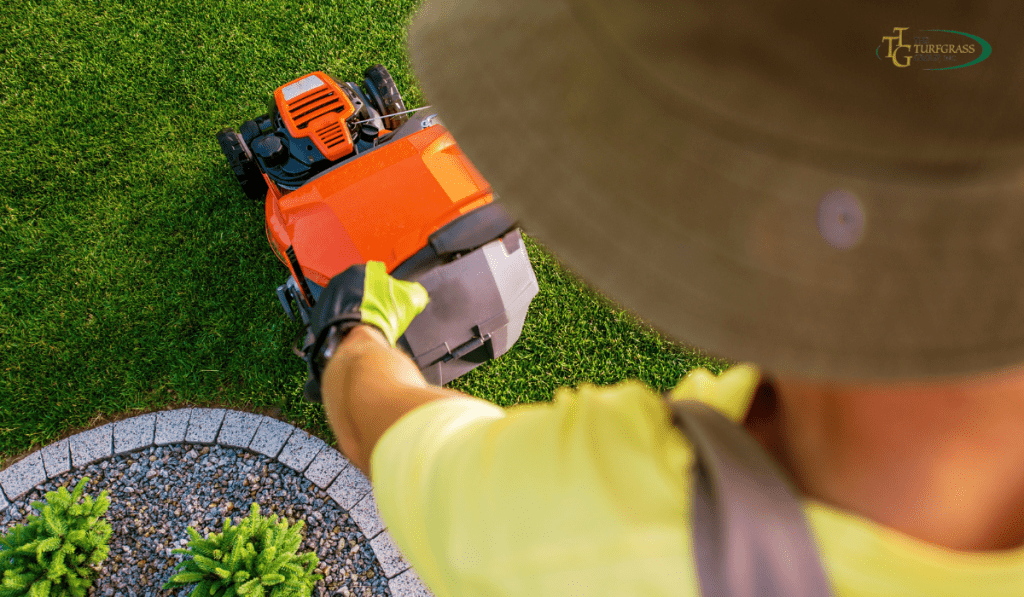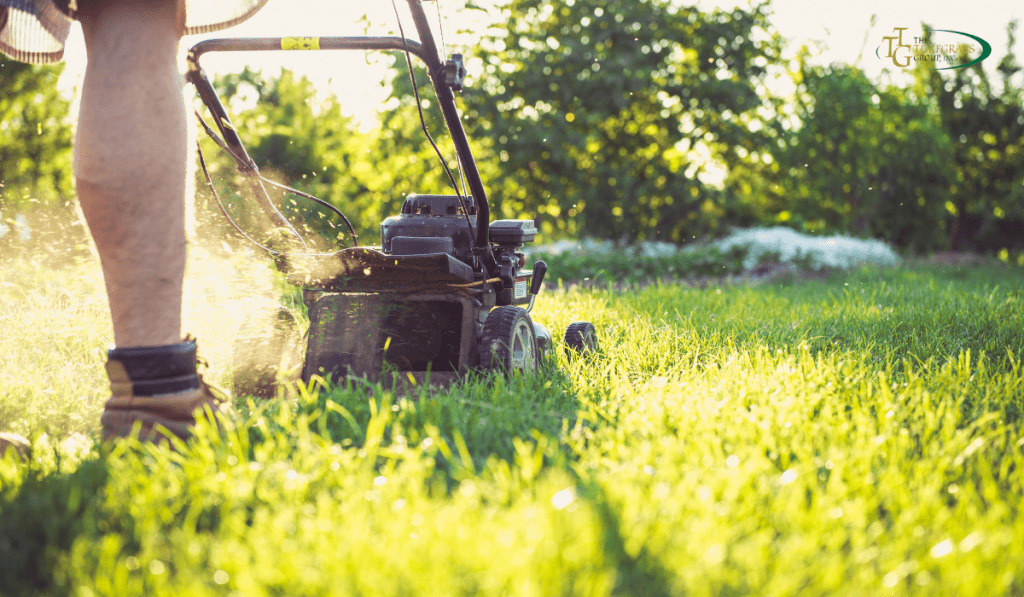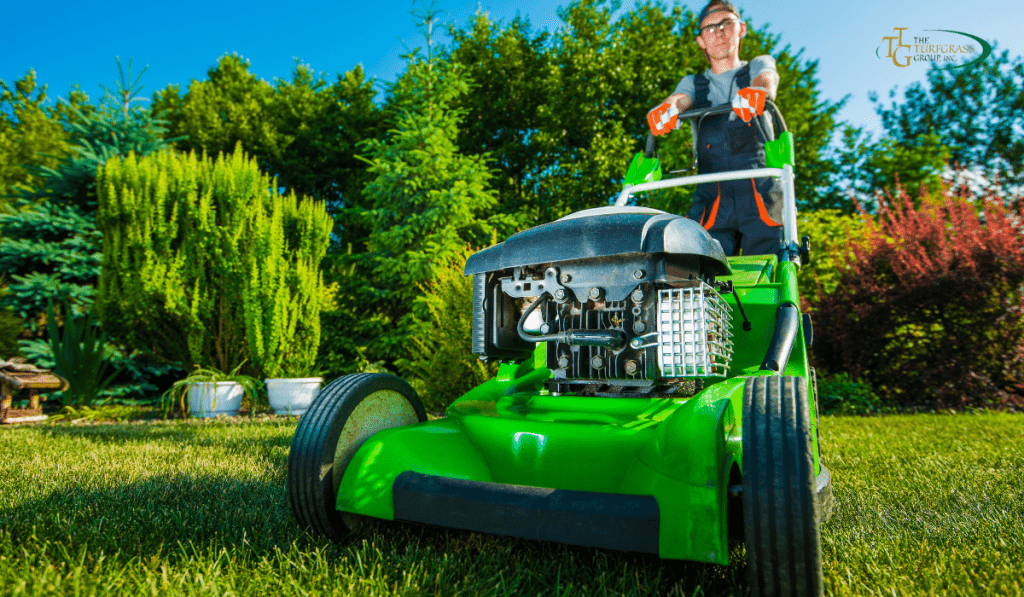
Do you want your lawn to look like it’s done by a professional?
We all know that looking good in the neighborhood is important, but it can be hard to keep up with all of the care and maintenance.
Luckily, we’ve gathered some of the best tips from the pros right here!
Read on to learn the basics of lawn care, plus some secrets from groundskeepers who know what they’re talking about.
How to Achieve that Professional Look
The first thing you need to do is have a plan for what type of turf you want on your property.
This will usually depend on factors such as climate, sun exposure, and how much time you have for upkeep.
There are many types of grasses out there so finding one that suits your needs should not be too difficult.
Turf Types Recommended by the Pros
Bermuda
TIFTUF™ Bermuda and TifGrand Bermuda are two excellent examples of this warm-season grass.
TifTuf Bermudagrass was developed with an emphasis on surviving in drought-prone regions.
This fine-textured, green leaf beauty uses 38% less water than similar grass cultivar and still looks great.
And just as important, TifTuf Bermudagrass has a high shade tolerance.
When cooler autumn temperatures arrive, it stays greener further into the season
Meanwhile, TifGrand® Bermudagrass is the stuff fields of dreams are made of.
Known for its dark green color and fine leaf blades, it’s a natural choice for playing surfaces across the nation.
If it offers an MVP performance against world-class athletes on game day, you can count on it to look great every day your athletes take your field – um, lawn.
TifGrand Bermudagrass thrives well in shade or full sunlight. Yet one more reason why homeowners, sod producers, and turf breeders regard it like a true champion.
Zoysia
And it’s as resilient as it is gorgeous! Creating a thick, fragrant carpet of grass you’ll want to walk through in your bare feet.
Zeon is considered to be the most beautiful of all the warm-season turfgrass cultivars.
And it can be grown as far west as the California coast, as far south as the Gulf Coast, and as far Northeast as Connecticut.
Meanwhile, JaMur™ Zoysia Grass is one of the most drought-resistant Zoysia Grasses.

It’s tough enough to let the kids and dogs play on it, and yet it still retains its gorgeous blue-green appearance and lush, dense texture.
In fact, it’s so dense, it chokes out weeds! Making it the perfect turf for high visibility areas.
How to Maintain Your Lawn with these Professional Lawn Care Tips
Once you’ve selected your turf type and have it established – either through installation or seeding – it’s time to care for it.
Fertilizing
Fertilizing is the trick to keeping your lawn lush and green.
But how? Simply put, plan on four applications of fertilizer each year.
You should apply fertilizer with a spreader at least three times during the growing season.
The first application of the year is usually in early spring, and then again after your lawn has begun to grow back from winter’s dormancy.
A final fertilization before fall will help promote healthy growth as well as strengthen root systems that can better withstand frost.
And take care not to use too much fertilizer, as this can cause excess growth, leading to weaker grass prone to issues.
Weed Control
Weed control products need to be used regularly just like the regular fertilizing schedule.
Most people will use a “weed and feed” product that contains weed-control products and fertilizer together.
This is the easiest way to do both tasks.
There are two types of weed-control products: Pre-emergent and Post-emergent.
Pre-emergent products control weeds before they germinate and come up.
Post-emergent products kill existing weeds.
Good weed control is achieved only when you use the right product for the right weed at the right time.
Mowing Properly
Mowing seems straightforward but is where many homeowners get tripped up.
That’s because many people set their mower too low or fail to check the settings at all!
If you mow your lawn too short, you will kill the grass.
Set your lawnmower to a high setting and you’ll end up with an uneven cut, which can result in dead patches of turf.
Thus, make sure you know what the proper mowing height for your turf is.
Again, one of the reasons why many pros recommend great warm-season grasses like Bermuda and Zoysia is because they are essentially foolproof!
They don’t require much water or fertilizing, and you can even cut them very short.
A typical home lawn will look best at about 1 inch.
It’s also important to mow frequently enough that you’re never removing more than 1/3 of the grass blade height at a time.
Be sure to wait until the grass is dry, though, so you don’t end up with wet grass clumps all over the yard.
Finally, vary your mowing patterns so that you don’t create ruts in the lawn from repeatedly mowing along the same track.
Seed Like a Pro
Lawns can get patchy. The best way to combat this is with strategic overseeding.
Overseeding is basically just putting new seed down on top of the existing grass to fill in bare spots.
It’s best done once a year, and you should do it while your lawn still has time before winter comes!
Doing so will give the seeds plenty of exposure to sunlight and water and prevent them from getting crowded out by other plants or grasses.
You can overseed your lawn by hand or with a seed spreader.
No matter how you do it, make sure there’s enough sun and water for the new grass to flourish!
Before you start, rough up the area with a rake.
This will loosen up the soil and allow the new seeds to form strong roots.
Time Your Watering
You may not realize it, but watering properly is as much about timing as the amount of water!
While you may have chosen a turf variety that does well on little water, you still need to take care of this step.
The ideal watering time for any lawn is between 2 AM and 7 AM.
Additionally, if you are trying to figure out how to measure your watering, here’s a little home hack: space several coffee cups across your lawn every few feet.
Turn your water on for 10 minutes and then check the cups.
The amount collected will help you gauge how long to keep your water on to reach the optimal amount.
Most lawns will need about an inch of water per week.
Some lawns will need more, especially in the hottest/driest months.
Meanwhile, other turf types, like the hardy JaMur Zoysia Grass might need less frequent watering.
Conclusion
Achieving a professional-looking lawn is within your reach with the right lawn care tips.
By selecting the appropriate turf type for your climate and soil, such as Bermuda or Zoysia grass, you can create a lush and beautiful lawn.
Maintaining your lawn involves regular fertilizing, weed control, proper mowing, strategic overseeding, and timed watering.
Following these professional lawn care tips will help you keep your lawn healthy, green, and the envy of the neighborhood.
FAQs
What type of turf is best for my lawn?
The best turf type depends on factors like climate, sun exposure, and maintenance time available. Consider Bermuda or Zoysia grass for their resilience, beauty, and suitability for various conditions.
How often should I fertilize my lawn?
Plan for four applications of fertilizer each year, with the first in early spring and the last before fall to promote healthy growth and strong root systems.
What’s the best way to control weeds in my lawn?
Use a “weed and feed” product containing weed-control and fertilizer. Choose between pre-emergent and post-emergent weed-control products based on your lawn’s needs.

What’s the ideal mowing height for my lawn?
Set your lawnmower to the proper mowing height for your turf, typically around 1 inch for Bermuda and Zoysia grasses. Avoid cutting more than 1/3 of the grass blade height at a time.
How can I overseed my lawn to fill in bare spots?
Conduct strategic overseeding once a year by spreading new seed over existing grass in bare areas. Rake the soil before overseeding to create strong roots for the new grass.
What’s the best time to water my lawn?
The ideal watering time is between 2 AM and 7 AM. Aim for about one inch of water per week, adjusting as needed for turf types with different water requirements.
How can I measure my watering to ensure the optimal amount?
Use a home hack by placing several coffee cups across your lawn, turning the water on for 10 minutes, and checking the cups to gauge how long to water for the desired amount.
Can I achieve professional lawn care at home?
Yes, by following proper turf selection, mowing, fertilizing, overseeding, and watering techniques, you can achieve professional-looking lawn care in your own yard.
What are the main benefits of using Bermuda grass or Zoysia grass?
Bermuda and Zoysia grasses are resilient, require less water and fertilizing, and can be cut short without losing their beauty. They are excellent choices for a low-maintenance yet attractive lawn.
How can professional lawn care tips benefit my lawn’s health?
Following professional lawn care tips ensures your lawn stays healthy, green, and thriving, enhancing your property’s appearance and creating a welcoming outdoor space.